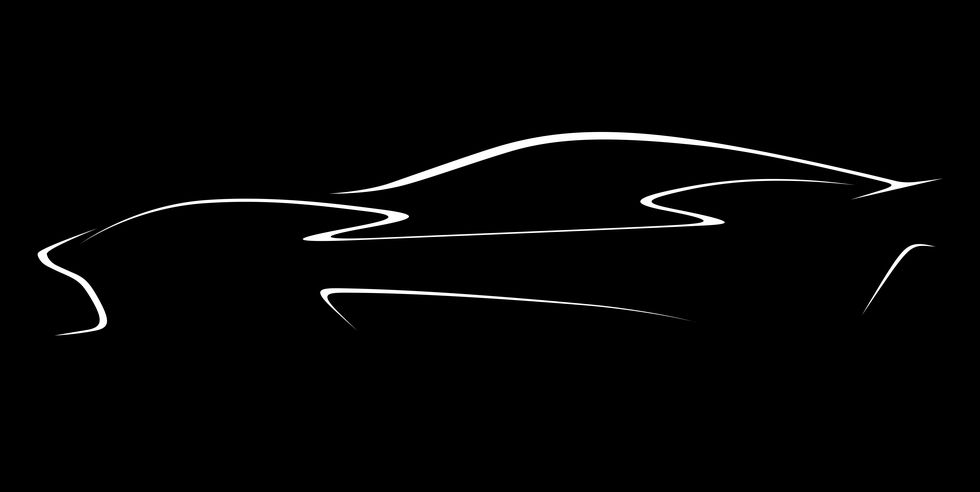- Lucid’s ultra-light motors are key to its collaboration with Aston Martin. (Pictured above, Aston’s Michael Straughan talks last week with Prince Richard, the Duke of Gloucester, in Gaydon.)
- Aston EVs will have quad motors, torque vectoring, and lots of power.
- AM F1 team is also collaborating on active drag-reduction system for road EVs.
We gave you the key details of Aston Martin’s technical alliance with US-based EV maker Lucid yesterday. Now we can add some more after Autoweek got to attend a briefing with Aston’s Executive Chairman Lawrence Stroll and Lucid’s CEO Peter Rawlinson.
The big news is that this is a long-term partnership which will ultimately form the basis for a range of EVs, not just one. Aston had previously planned to throw in with Mercedes to create a pure electric model—the equity-sharing deal Aston signed with Daimler soon after Stroll’s Yew Tree Consortium had a second stage that would have included sharing EV tech.
The new agreement with Lucid means part of the original deal won’t happen. But Mercedes will still supply V8 combustion engines to Aston, and the British company’s products will continue to use Merc’s electronic control architecture.
Aston’s Chief Technical Officer Roberto Fedeli said the core appeal of Lucid was the company’s proprietary powertrain, and the exceptional power density of its combined motor, transmission, and inverter units.
These are already producing up to 9 hp for each kilogram of mass—so, just over 4 hp per pound—with Rawlinson saying that is more than twice the power-to-weight ratio of the Tesla Model S Plaid, with longer-established automakers’ systems lagging far behind that. Each Lucid drive unit can deliver up to 670 hp and weighs just 163 pounds.
For Aston that means light, easy to package motors that should combine huge power with very high rates of responsiveness. The forthcoming triple-motor Lucid Air is set to have more than 1200 hp, with Rawlinson confirming the motors Aston will use are actually set to be its next-generation units. Lucid’s compact battery cell design is also very important to Aston, as it will allow future EVs to keep the low, sleek dimensions of the company’s gasoline-powered cars.
The plan is for a family of EVs, not just a standalone model. Fedeli told journalists that Aston will create its own EV platform, set to use the same bonded aluminum construction technique it uses for the structures of its existing lineup. This will allow different battery configurations with different dimensions and wheelbases.
Lucid-sourced twin-motor drive units will power the rear axle, while Aston is planning to use motors of its own design at the front; these will be developed from the ones it is creating for the forthcoming PHEV Valhalla supercar.
Rawlinson confirmed there is no contractual issue with Aston extracting more performance from the shared components than Lucid does, suggesting the peak output for a quad-motor system may be beyond 1500 hp.
The plan is to build multiple EVs, with the first—to judge from a freshly released sketch—set to be a sleek-looking SUV (see sketch above). But beyond that we’re told the plan is to create models offering electric alternatives to Aston’s traditional front-engined sportscars, presumably therefore sharing much of the same design DNA.
Fedeli also said it was unlikely that any Aston EV will use fewer than four motors given the need to deliver huge performance and to support torque vectoring at each end.
One more intriguing detail from the briefing: Fedeli admitted that Aston is working on an innovative drag-reduction system through a partnership with the company’s Formula 1 team—one that will blow high-speed airflow into a car’s wake to reduce drag.
Aston has been working on EVs for longer than many of the rivals that have subsequently passed it. There were plans to produce a limited run of fully electric Rapide E sedans in 2018, and it later announced plans to relaunch its long-dormant Lagonda subsidiary as an EV brand.
But the Lucid deal would seem to mark the point at which the ambition is set to become reality. By 2027 Aston is predicting three quarters of its development spending will be on creating fully electric models.
Is the Lucid-Aston Martin pairing a match made in EV heaven, or do you think the relationship will bear little fruit? Please comment below.
European Editor
Mike Duff has been writing about the auto industry for two decades and calls the UK home, although he normally lives life on the road. He loves old cars and adventure in unlikely places, with career highlights including driving to Chernobyl in a Lada.
Read the full article here



